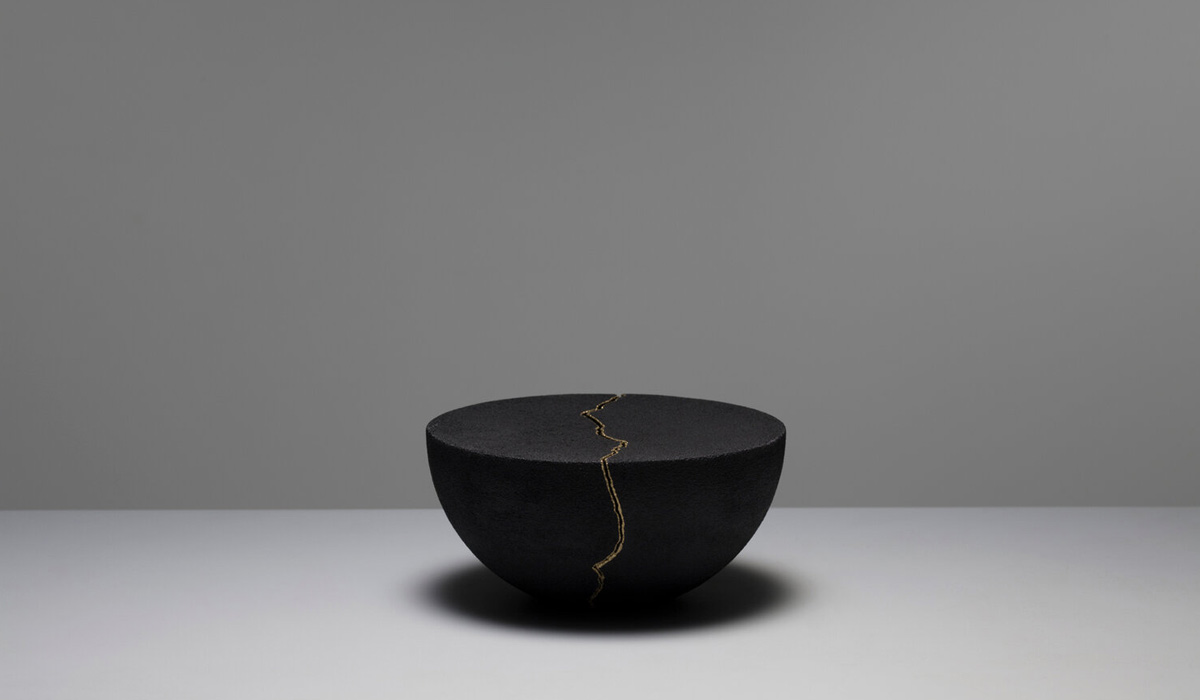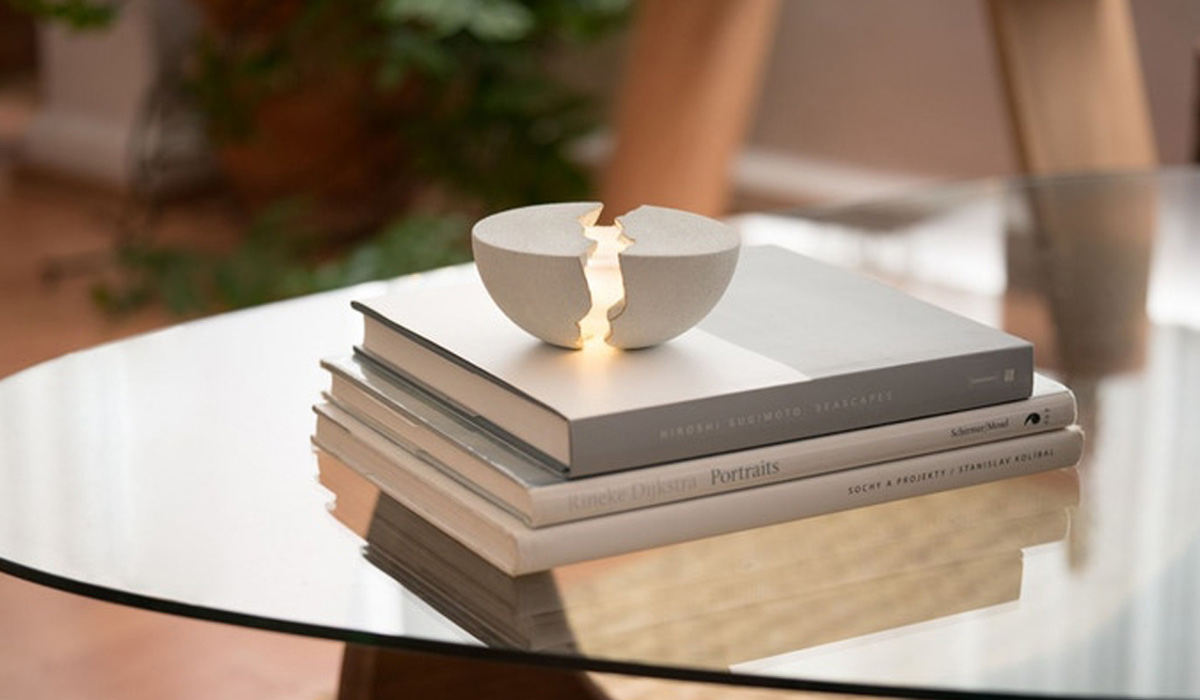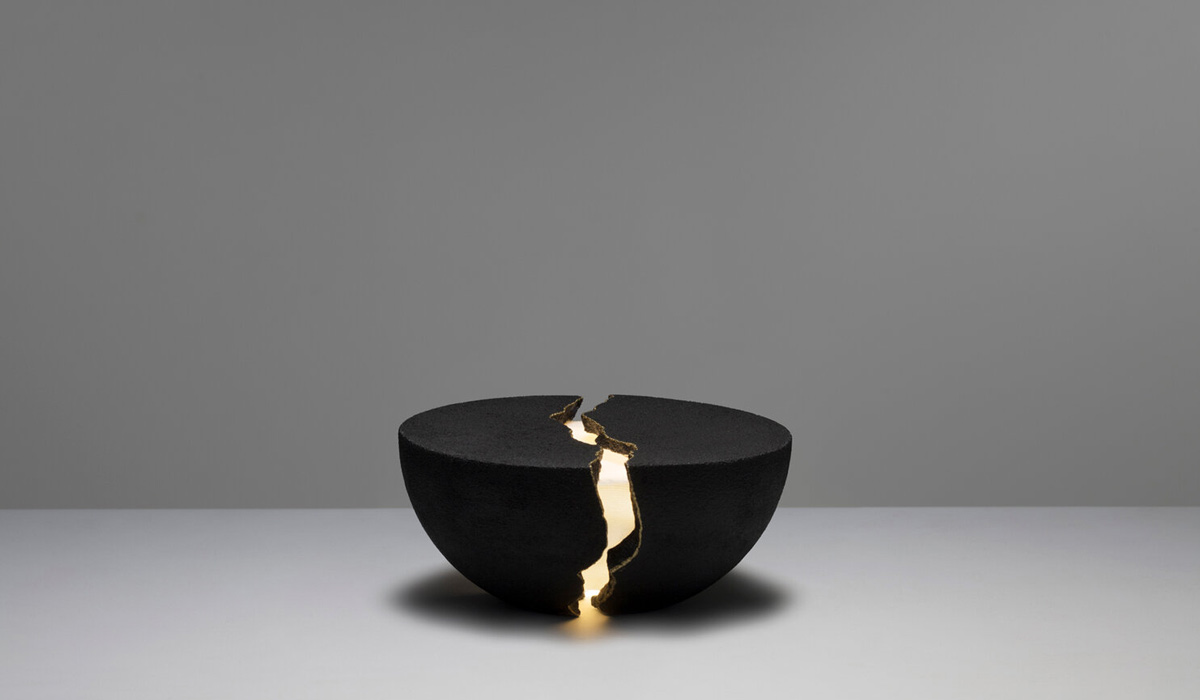In Japan, there’s a concept called “kintsugi.” Like all translations from another language, it’s a little difficult to describe precisely, but the essential idea is this — just because something is broken doesn’t mean it is trash. By embracing kintsugi, an item’s repair marks become something to celebrate and cherish rather than something to hide. Architect Max Gunawan, the founder of Lumio, traveled widely in Japan and became fascinated with kintsugi and its associated design philosophies. That fascination is woven into his newest product, Teno — a Bluetooth speaker that transcends how we expect sound products to look, feel, and sound.
Lumio thinks of Teno as the speaker equivalent of a sound bowl: meditative, peaceful, and beautiful. So how did they do?

Teno Kintsugi Aesthetics
The first thing you’ll notice about Teno is that it looks like no speaker you’ve ever seen. Made using natural sand, Teno is sculpted in the shape of a small bowl. The material chosen for this kintsugi speaker is inspired — nobody needs another slick metal or plastic surface in their house. And because Teno features a natural material, it will develop a patina over time and use. More than that, it’s just a pleasure to hold natural materials over plastic.
The product’s shape invokes the Japanese cultural ideas that inspired it — simplicity, minimalism, and attention to detail. And at only 5 inches in diameter, the Teno speaker is small enough to look great anywhere in your house.
A crack runs throughout the textured sand surface, calling to mind that kintsugi concept we discussed earlier. Move the two halves of Teno apart slightly, and a warm golden glow emanates from within. That’s right, Teno is a light as well as a Bluetooth speaker. The light has four brightness settings, and you can control each with a simple tap of the finger.

Teno Speaker Sound
In addition to kintsugi, the Teno speaker was also inspired by nature. Lumio founder Max Gunawan was walking through a forest one day and was taken by how the sound of the birdsong seemed to emanate from everywhere and nowhere all at once. He designed Teno to evoke the same feeling. When you crack Teno open all the way, the speaker activates with the chime of a sound bowl, but the electronics are still hidden deep inside the device. It’s a speaker that doesn’t look like a speaker, and we like that — our houses are already too crammed with cords, screens, and metallic surfaces.
There are no indicator lights anywhere on Teno — all the notifications you need to receive (like low battery or Bluetooth connection) are delivered by the sound of birds chirping, leaves crackling, or water dripping. You can adjust the volume of Teno’s speaker by sliding your fingers up and down the bowl’s surface. If you receive a call while you are streaming music from your phone, a single tap near the bowl’s edge will answer the call and cast it to Teno’s speaker. The microphone is noise-canceling, to boot.
Teno’s speaker is powered by a 10W class-d amplifier. That translates to powerful sound with minimal distortion. Lumio tunes the Teno with DSP technology for a balanced listen. A neodymium full-range driver and passive radiator deliver clear sound across the high, mid, and low ranges.
An additional cool feature of Teno’s is its ability to create a stereo experience intuitively, without having to pull out your phone and fiddle with an app. If you have two Tenos, simply tap the base of each until, and they will pair — delivering you twice the volume in addition to stereo sound.

Purchasing Info
Teno, offered in black and white sand options, is available on pre-order for $300. Order now and expect your Teno speaker to arrive in May 2021. That is a premium cost for a Bluetooth speaker, we know, but consider it an investment in a quality piece of gear that combines form and function in a truly unique way.



